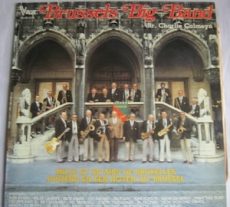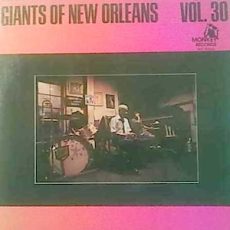
Daily Dose Of Jazz…
Alphonse “Al” Goyens was born October 1, 1920 in Wetteren, Belgium. He took piano lessons as a child but abandoned them at the age of twelve. In 1936, he bought a trumpet and began playing music again, teaching himself and playing with amateur bands. Completing a degree in industrial engineering, he was interned in Germany at the outbreak of the war and had to stop playing. Starting again he played too intensely, which paralyzed his lips, but overcame this situation through careful practice.
His return from captivity saw him a member of orchestras led by Henri Van Bemst and Jean Omer, making his first recordings with the latter. He then joined the orchestra of Léo Souris who played for the American army in Germany. Returning to Belgium, Al joined other musicians to form the Orchestre régulier du Cosmopolite , which gave him the opportunity to perform with major names of the jazz scene who were guests in Brussels.
In 1949 he and his orchestra again toured for the US Army, performing in Germany, the Azores, and the USA. Goyens led his orchestra for nearly a decade from 1949 featuring Jacques Pelzer, Bobby Jaspar, Francy Boland, Jean Warland, Freddy Rottier, and occasionally Don Byas and Kenny Clarke.
Once again he went on to work for the US Armed Forces and later with an international orchestra in Spain and the United States. Al later arranged and played in the Brussels Big Band. His favorite trumpeters were Clifford Brown, Dizzy Gillespie, and Clark Terry but his playing was more reminiscent of Harry Edison.
Trumpeter, arranger and orchestra leader Al Goyen played flugelhorn, and bugle, who never recorded as a leader, appreciated the sound of the muted trumpet, died on January 30/31, 2008 in Forest/Vorst, Belgium.
More Posts: arranger,bandleader,bugle,flugelhorn,history,instrumental,jazz,music,trumpet

Daily Dose Of Jazz…
Jerome Don Pasquall was born on September 20, 1902 in Fulton, Kentucky, and grew up in St. Louis, Missouri. As a child, he played the mellophone in brass bands. He served in the United States Army in 1918 in the 10th Cavalry Band, and picked up clarinet during this time.
Following his discharge, Pasquall played with Ed Allen in 1919 and then found work on riverboats playing with Charlie Creath and Fate Marable. He moved to Chicago, Illinois to study at the American Conservatory, and played with Doc Cook’s Dreamland Orchestra as a tenor saxophonist.
Departing for Boston, Massachusetts he attended the New England Conservatory of Music. In 1927 and 1928, he played with Fletcher Henderson. Following this he returned to Chicago and led his own ensemble, in addition to playing with Freddie Keppard, Dave Peyton, Jabbo Smith, Tiny Parham, and Fess Williams.
He toured Europe with the 1934 Blackbirds, Eddie South, Henderson again in 1936, and Noble Sissle from 1937 throught World War II in 1944. After the mid-1940s, he did freelance work in New York City with Tony Ambrose among others, and gradually receded from active performance.
Clarinetist, alto saxophonist, mellophonist Jerome Don Pasquall, who never led his own recording session, dies on October 18, 1971 in New York City, New York.
More Posts: bandleader,clarinet,history,instrumental,jazz,mellophone,music,saxophone

Daily Dose Of Jazz…
Joseph G. Cocuzzo was born on September 17, 1937 in Boston, Massachusetts and raised in a family of enthusiastic amateur musicians. He began playing drums as a small child, later studied extensively, and played in many bands in and around his home town.
In the late 1950s he was residing in Chicago, Illinois where he joined the big band led by Ralph Marterie before moving on to the Woody Herman band. By the early Sixties he worked with Don Ellis, Les and Larry Elgart, Gary McFarland and Tony Bennett. The mid-70s saw Joe returning to Bennett for a five-year engagement, then he was with Harry James before beginning a decade-long spell with Rosemary Clooney.
The subtle skills he displayed with Bennett and Clooney found him in demand as a singer’s accompanist and he also worked with Vic Damone, Julius LaRosa, Susannah McCorkle and Sylvia Syms. Throughout this period and on through the new millennium, Cocuzzo was in frequent demand for recording sessions, appearing on albums by many artists including Buddy De Franco and Dick Sudhalter.
During his time with Clooney Cocuzzo had begun writing song lyrics, and he went on to collaborate with several composers, notably the Brazilian Ivan Lins. A smooth and swinging player, always aware of the subtly supportive role required by many leaders, especially singers, Cocuzzo was a member of New York Swing.
Drummer and songwriter Joe Cocuzzo, who never recorded as a leader but has 77 recordings as a sideman, died on July 31, 2008 in New Jersey.
<!– wp:paragraph —More Posts: drums,history,instrumental,jazz,music,songwriter
Daily Dose Of Jazz…
Mark Jay Levine was born on October 4, 1938 in Concord, New Hampshire and began playing the piano at the age of five, trombone in his early teens. Attending Boston University, graduating with a degree in music in 1960, he also studied privately with Jaki Byard, Hall Overton and Herb Pomeroy.
Moving to New York City in the Sixties he freelanced and then played with musicians Houston Person, Mongo Santamaría, and Willie Bobo from 1971 to 1974. Levine then moved to San Francisco, California and played with Woody Shaw for two years. His debut album was made as a leader for Catalyst Records in 1976.
He went on to play with the Blue Mitchell/Harold Land Quintet, Joe Henderson, Stan Getz, Bobby Hutcherson, Luis Gasca, and Cal Tjader. From 1980 to 1983, he concentrated on valve trombone, but then returned to playing mainly the piano. He then led his own bands, and recorded for Concord as a leader in 1983 and 1985. From 1992 Mark was part of Henderson’s big band. He created a new trio in 1996 and recorded it for his own, eponymous label. His Latin jazz group, Que Calor, was formed in 1997.
He put on his educator hat in 1970, teaching in addition to private lessons at Diablo Valley College, Mills College, Antioch University in San Francisco, San Francisco Conservatory of Music, Sonoma State University, and the JazzSchool in Berkeley. Levine wrote two method books: The Jazz Piano Book, and The Jazz Theory Book.
Pianist, trombonist, composer, author and educator Mark Levine, whose album Isla was nominated for a Grammy Award for Best Latin Jazz Album, died of pneumonia on January 27, 2022 at the age of 83.
Get a dose of the musicians and vocalists who were members of a global society integral in the making and preservation of jazz for over a hundred and twenty-five years…
Mark Levine: 1938~2022 | Clarinet, Composer, Educator, Director, Producer
More Posts: author,bandleader,composer,educator,history,instrumental,jazz,music,piano,trombone

Daily Dose Of Jazz…
Sammy Weiss was born on September 1, 1910 in New York. He started in the 1930s with the Gene Kardos Society Orchestra, then gigged and recorded with Benny Goodman, Adrian Rollini, Wingy Manone, Miff Mole, Tommy Dorsey and Artie Shaw.
The 1940’s had Sammy concentrated on free-lance recording with Louis Armstrong and Johnny Guarnieri. He eventually led his own popular dance band in hotels and dance halls around Los Angeles, California.
He also worked with Louis Armstrong, Paul Whiteman, Louis Prima, and Erskine Hawkins, among others. After moving to California in 1945, Weiss led his own successful orchestra and worked freelance. He led bands throughout the ’60s, As an actor, Weiss was seen in Shower of Stars and The Jack Benny Program.
Drummer Sammy Weiss died on November 18, 1977 in Encino, California.
More Posts: drums,history,instrumental,jazz,music



